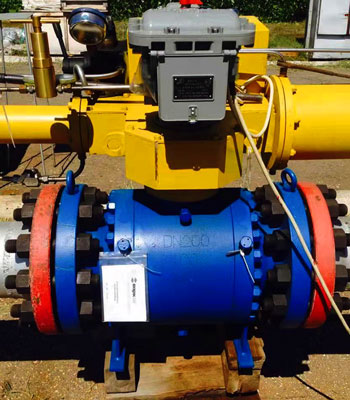
Step 1
To turn on the valve, the handle or actuator is turned a quarter turn. This changes the position of the disc inside the valve's body from perpendicular to parallel to the flow of the media.
Step 2
The pressure drops when the valve opens, and the disc moves away from the seat towards the valve's centreline. To allow the medium to flow in full force, the handle is turned a full quarter turn.
Step 3
Once the process is complete, the handle is moved in the opposite direction to turn off the valve. This action brings the disc back from the parallel position to the perpendicular position. As the disc returns to its original position, it firmly lodges itself to the seat and seals shut the flow of media.
Thus, with a simple turn of the handle, the valve opens and shuts to regulate the flow of media. Throttling is a process that happens when the valve's disc is positioned at a certain degree to allow the flow of media partially. Butterfly valves are very effective and reliable when it comes to controlling the flow of media because the design of the valve allows to control the angle created by the disc in relation to the centreline.
Butterfly valves can be operated manually, electrically and pneumatically. Pneumatically-driven valves have a piston attached to the side of the body, which provides the right air pressure required for the valve to open. Electrically operated valves come with a gearbox attached to the top of the valve. When the gearbox receives a signal from a remote source, it turns the stem to move the disc to the parallel position.
Of late, pneumatic butterfly valves are in high demand for applications that require a quick and unrestricted operation. By design, the butterfly valve is quick to open and close and is very efficient in regulating and isolating the flow of media. Its adaptability to a vast range of applications has driven valve manufacturers to design different types of butterfly valves with various type-end connections and disc configurations.
Butterfly valves are an ingenious design. Their simple working mechanism makes them ideal for applications that range across sectors like the food and beverage industry, wastewater treatment facilities, fuel industries, and fire protection services.
Keeping up with the demand for these industrial valves, Oilway manufactures Indonesia's high quality double eccentric and triple eccentric butterfly valves. Our strict adherence to quality standards ensures that each product is flawless, durable and highly efficient.
To make business enquiries or to place your orders, contact us @+86-21-69891289 or email us info@oil-way.com